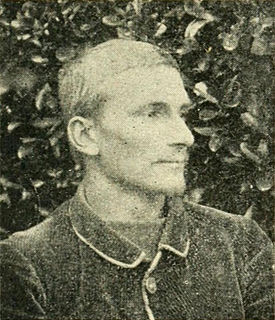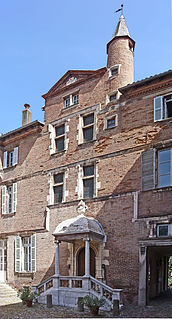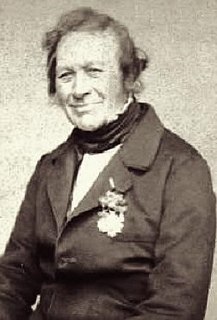
Toulouse is the prefecture of the French department of Haute-Garonne and of the larger region of Occitania. The city is on the banks of the River Garonne, 150 kilometres from the Mediterranean Sea, 230 km (143 mi) from the Atlantic Ocean and 680 km (420 mi) from Paris. It is the fourth-largest city in France, with 493,465 inhabitants within its municipal boundaries, after Paris, Marseille and Lyon, ahead of Nice; it has a population of 1,454,158 within its wider metropolitan area, the fifth-largest in France, after Paris, Lyon, Marseille, and Lille.

Montricoux is a commune in the Tarn-et-Garonne department in the Occitanie region in southern France. It is located along the banks of the Aveyron, between Nègrepelisse and Bruniquel. The written history of the commune dates back to the eighth century. The Château de Montricoux, built by the Knights Templar, now houses the Marcel-Lenoir Museum, which preserves 130 drawings, pastels, watercolors, oils, and frescoes by this artist, a resident of the town.

Robert Arnauld d’Andilly was a French conseiller d’État, specialising in financial questions, in the court of Marie de' Medici. By the elegance of his language, he was among the major poets, writers and translators of 17th century French classicism. A fervent Catholic, he played an important role in the history of Jansenism and was one of the Solitaires of Port-Royal-des-Champs. He was also renowned for his part in the development of the pruning of fruit trees, to which he was devoted.

René-Paul Schützenberger was a French Post-Impressionist painter.

Clémence Isaure is a quasi-legendary medieval figure credited with founding or restoring the Acadèmia dels Jòcs Florals or Academy of the Floral Games. She is supposed to have left a legacy to fund awards in the form of gold and silver flowers that the city would award annually to the best poets.

Musée Saint-Raymond is the archeological museum of Toulouse, opened in 1892. The site originally was a necropolis, and in later constructions was a hospital for the poor and pilgrims, prison, student residence, stables, barracks and presbytery, eventually becoming a museum in 1891. It is housed in the former Saint-Raymond university college dating from the sixteenth century that borders Basilica of Saint-Sernin.

Joseph Anglade (1868–1930) was a French philologist. He specialized in Romance languages, particularly Occitan, and studied the lyrics of the troubadours. He was instrumental in formalizing the term Occitan for the language of Provence.
Pierre Affre (1590-1669) was a French sculptor.
Pierre-Jean Souriac is a contemporary French historian, a Lecturer in Modern History at Jean Moulin University Lyon 3.

The Hôtel de Bagis in Toulouse, France, is a Renaissance hôtel particulier (palace) of the 16th century. It is a listed historical monument since 1889.

The Hôtel de La Mamye in Toulouse, France, is a Renaissance hôtel particulier (palace) of the 16th century.

The Hôtel d'Ulmo in Toulouse, France, is a Renaissance hôtel particulier (palace) of the 16th century. It is a listed historical monument since 1925.

Louis Charles André Alexandre Du Mège or Dumège,, was a French scholar, archaeologist and historian.
Bernard de Caux, or in Latin Bernardo or Bernardus de Caucio, birth date not known, died in Agen on 26 November 1252, was a Dominican friar and medieval inquisitor. His activities mainly took place in the region of the County of Toulouse between 1243 and 1249. He originated the investigation processes and his witness interrogations are recorded in a 13th-century transcribed manuscript preserved in the library of Toulouse.
Pierre Levesville was a 17th-century French architect.

Southern French Gothic is a specific and militant style of Gothic architecture developed in the South of France, especially in the Toulouse region. It arose in the early 13th century following the victory of the Catholic church over the Cathars, as the church sought to re-establish its authority in the region. As a result, church buildings typically present features drawn from military architecture. Taking into account the Cathars' criticism of the Catholic Church, Southern French Gothic is simpler and less ornate than northern French Gothic, and further differs in that the construction material is typically brick rather than stone. Over time, the style came to influence secular buildings as well as churches and spread beyond the area where Catharism had flourished.

Joseph, Pierre, Tancrède Latour was a French Romantic Drawer and painter. His works are hosted by several museums in South of France.
Under the name Pierre Souffron are two brother architects from Périgord, sons of Jean Souffron.

Elisa de Lamartine,, also known as Marianne de Lamartine, was a French painter and sculptor believed to be of English ancestry.

The Museum of Art and Archeology of Périgord, often abbreviated MAAP, is a municipal museum located in Périgueux. It is the oldest museum in the Dordogne department and it includes over 2,000 square metres of permanent exhibition.





















